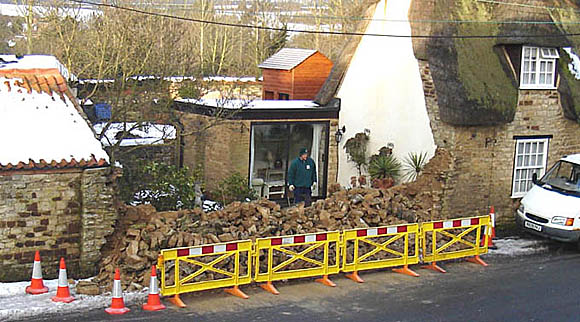|
Stoke Road Part I , Blisworth, Northamptonshire, UK. All pictures are presented at relatively low resolution. There will be hundreds of pictures on this site - there is an economic limit to the webspace available. The point of this presentation is that you can see for yourself the extent of the collection and return later as the collection expands - as it surely will. Any interest in copies of a picture at a higher resolution (ie. clarity) should be directed through contacts given in the Blisworth "Round and About" parish council publication or using the comment form on the home page. In some cases the pictures are not available due to copyright restrictions. However, permission has been obtained, where possible, to include them here. Printed below each image is the photographer's name, if known. |
|
|
Back to INDEX page This is Part I Part II |
|
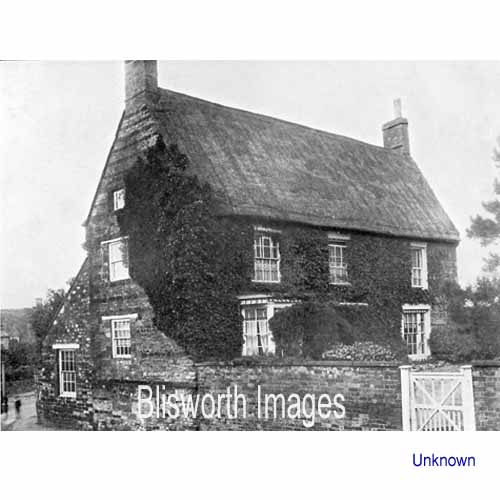 |
30-00 Crieff House at the corner of the Stoke Road and the High Street. Taken in 1919 for the Grafton Estate sale. Note the thatch roof ,the garden wall of brick and the drop-level extension that was, at the time, a means of access to a cellar, maybe an "underground kitchen" - as described in Mr. Whitlock's lamplighting tale. The cellar was recently discovered to be nearly completely full of building rubble. Crieff House is a listed building. |
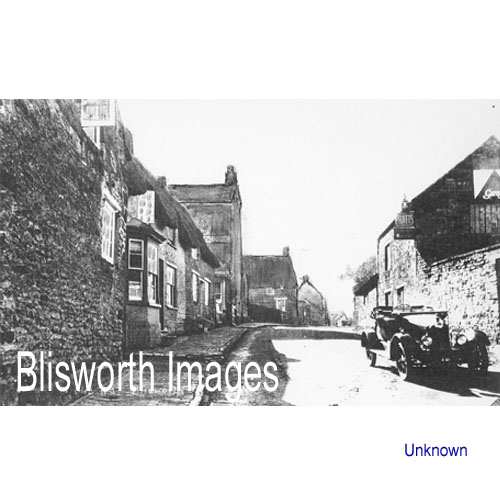 |
30-01 A 1920's picture taken from beside the garden gate to Crieff House. |
|
30-02 A view from the end of the Royal Oak. Date c.1930. |
|
| 30-03 Also discussed in the Shops section. The pavement crossing to the extreme left is to Crieff House. There is an access just beyond the wall with ivy into Allen's yard. That wall with ivy is all that is left of a house which was set end on to the road and is more visible in 30-01 above. The date was 1967. | |
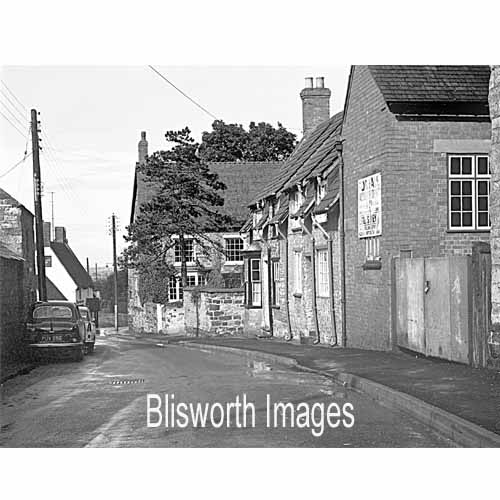 |
30-03a Taken at the same time as the picture above - looking the other way down Stoke Road. The serious bulging walls of the cottages is more noticeable. These cottages were known as the bacon factory cottages and demolished at the same time as the bacon factory - see below.
|
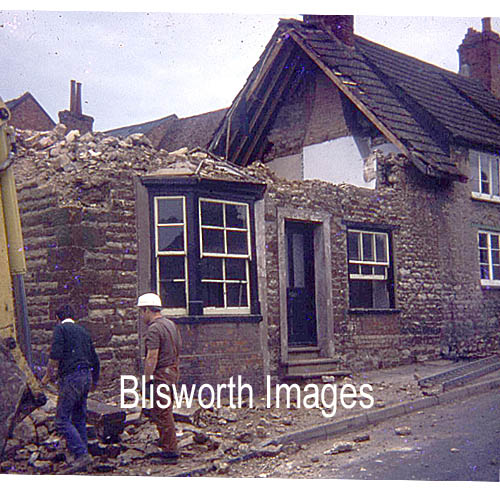 |
The bacon factory cottages were demolished starting in circa 1973. |
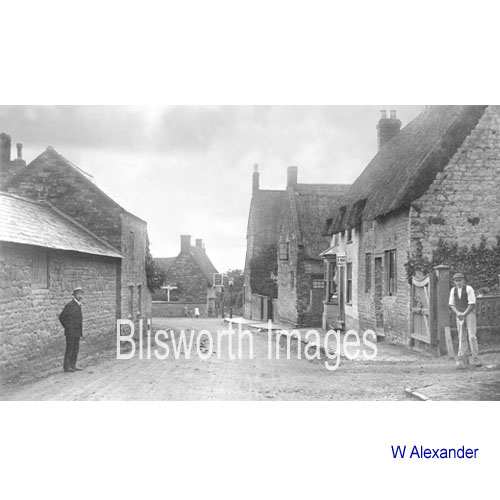 |
30-04 And in this early
picture, c. 1905, the house can be seen. It was probably
demolished in the 1930's as so many were in the village. The gates
to the right are to Sturgess' bake house. The buildings on the left
were in occupation at the time by wheelwright and carpenter Walter
Chester.
For a collection of images re. the bake house. |
| 30-05 A view also towards the
Royal Oak Inn but from further up Stoke Road. The building to the right
is Home Farm. The date is pre-1930 as the house discussed in the
previous picture is still standing.
The two pairs of houses on the left, with the bulky chimneys are shown also in the next picture. |
|
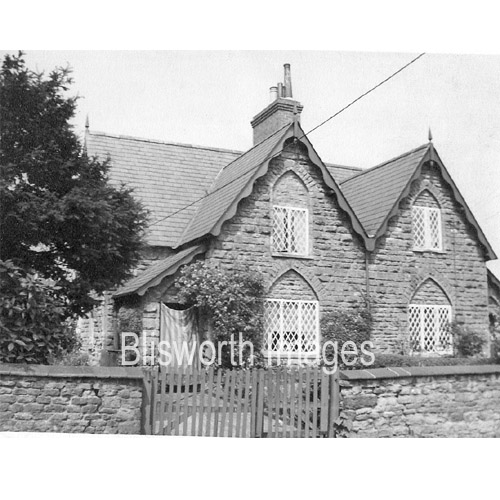 |
This is one of the two pairs of cottages
built in c1870 to a design from Lady Grafton. This is Nos. 14 and
12 Stoke Road.
Note the individualisation of the upper windows which, it is said of the right hand example, was modified for sake of modesty. |
|
30-06 The thermometer, which carried a promotion for Stephen's Inks, on the wall behind the children was presented to the doctor's practice in approx. 1977. Some say that it disappeared from the wall at a time when the property was unoccupied and lay "dormant" for a few years. The yard to the left lies in front of No 21 Stoke Road. The building behind was a butcher's shop associated with No 21.
|
|
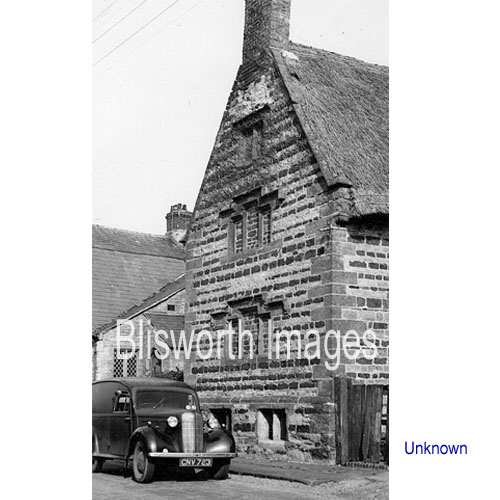 |
30-07 No 21 Stoke Road - was
once a farm & butcher's business. Many years ago the house was
an alehouse known as "The Feathers". This gable has
ironstone and sandstone which has been damaged by the Great fire of 1798
- it is darkened in colour.
The building is a listed one. |
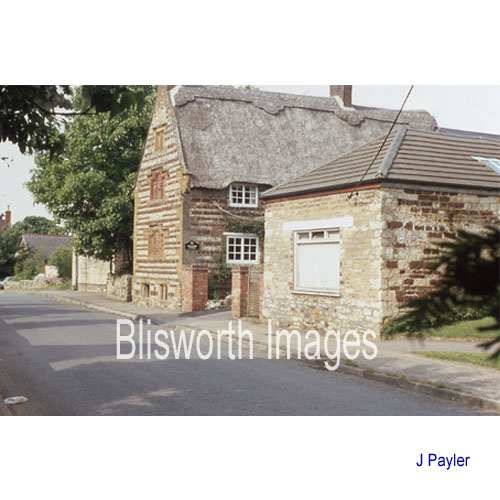 |
30-08 See the previous two pictures. A view of the same buildings in the 1970's. The brick walling has been removed.
|
| Between the
above-mentioned building and the group of cottages below, there was a farm house, Home Farm, which was demolished in 1967 to make way for a new street called Buttmead. See the Panorama section. |
|
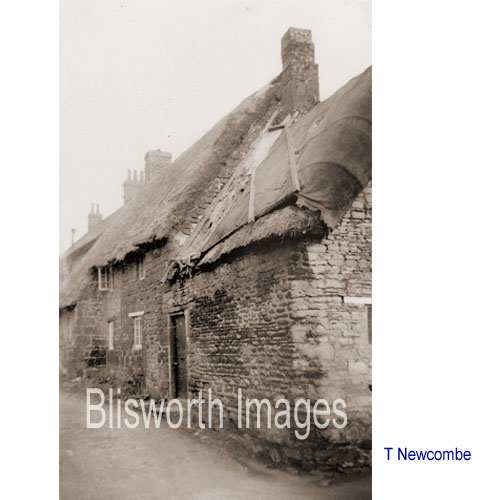 |
30-22 This view taken in 1957 is along an alleyway at right angles to the Stoke Road between Nos 39 and 45. The two buildings near the camera, numbers 41 and 43, were demolished in the 1960's and not rebuilt. It is thought that the Whitlock family, ie. Whitty Whitlock's father and grandfather, had their carpenters shop along the alley. The space left is now a garden fronted by a brick wall. Click here to view this gable end as it was in 1931 and is in 2006. The furthest house is now called Pandloss and is accessed by a driveway nearer to the village centre. The nearest door was the entrance to number 43 which was the home of the French family for many years. Well known in Blisworth was Ron French who died in 1992.
|
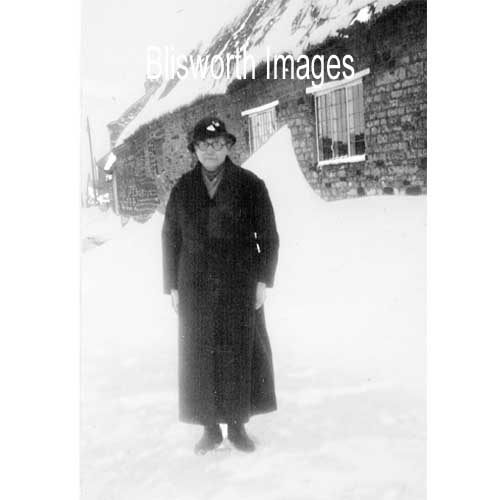 |
30-26 This is Ron French's mother in 1947. The worst snow drifting in the area was apparently the Gayton Road just outside the village. In the exercise to get the road open, Blisworth men with shovels got just beyond Hill Farm when they realised that diggers from Gayton were just in front of them.
|
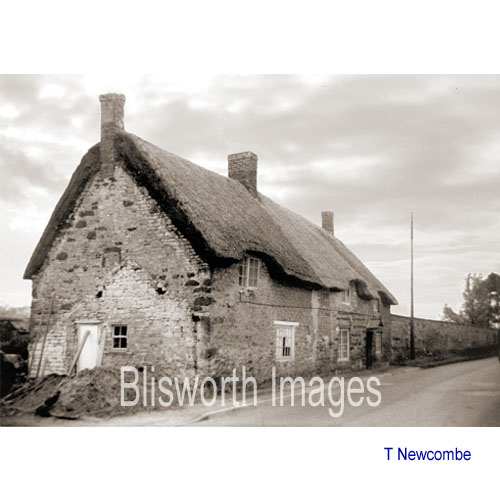 |
30-24 This is No 20 Stoke Road in 1957. The project, which evidently is in hand in this picture, was to build a brick-surrounded small yard and a toilet along with a window at the top of the stairs inside. The chimney, which was probably for a "copper" was sealed off. The evidence of an old ridged shed, against the gable end of the house, suggests the location for one of the village cobblers who worked here - see below for details. In 1969 the later brick extensions were demolished and a flat roofed extension was built instead. No 20 and the two cottages attached, nos. 16 and 18 are listed buildings.
|
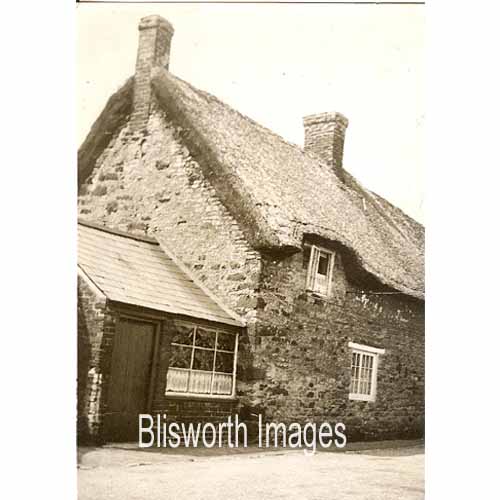 |
30-24a A recently acquired
photograph predates the one above. It is from a descendent of the
Capell family, Maurice Hickman. Probably from about 1938, when the
Westley Buildings were demolished, Benjamin
George Capell (1875 - 1954) lived here. He was the son of John Capell - publican of the Sun,
Moon and Stars (see 31-01) - and, ka. "George", he was
groom to Capt. Elmshirst. His sister, Ada Mary, had married
in 1910 a William Hill, cobbler. Ada died in 1916 of
TB and William Hill remarried. William Hill set up a
cobblers shop on the High Street (see 16-12a)
and died some time before 1952 leaving his second wife in the cottage
next to the High Street shop.
This outhouse was the abode of an earlier cobbler of Blisworth, John Green (1843-1918) who also wrote sacred songs. The story of the Greens is told elsewhere. Interestingly, William Hill was a cobbler apprentice to John Green's father who lived at this house. |
|
|
|
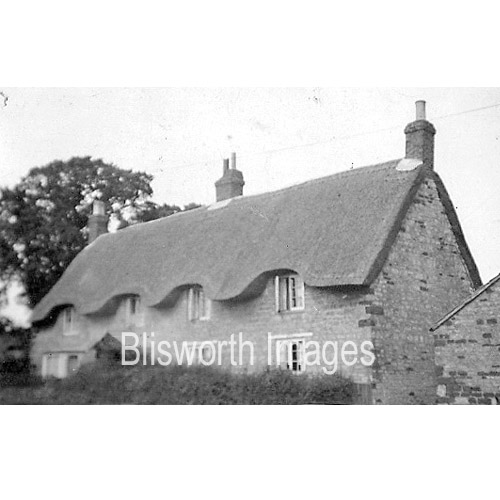 |
A little further out from the village centre compared to the picture above, there is a driveway that leads to the rear of Blisworth House. This driveway was once connected to Church Lane as well. Clearly, some of the occupants of Blisworth House must have used this as an entrance for in the census the house facing the drive is referred to as Lodge Cottage. At the time this picture was taken the house was one cottage (as it was in c1851) and occupied by Tom Chapman and wife Mary Butler who was born in Blisworth. Tom Chapman was a member of the Blisworth Ambulance Service. |
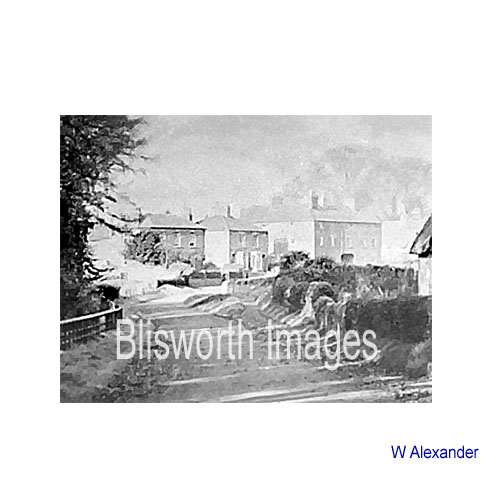 |
30-09 Picture taken in c. 1930.
Three of the buildings owned by Ann Westley or built by her son are
seen here, all built in brick. This is a magnified part of a
picture taken by Walter Alexander of the twin cottages (The Green)
on the Stoke Road.
On the left Victoria House (was Victoria Cottage) was probably built for Ann Westley to live in. The other two are tenements for village families. There is a plan of the Westley buildings in Part II. |
| 30-10
A view from the Stoke Road into the archway entrance to the third
building built in brick. Further tenements are behind, built in
stone.
|
|
